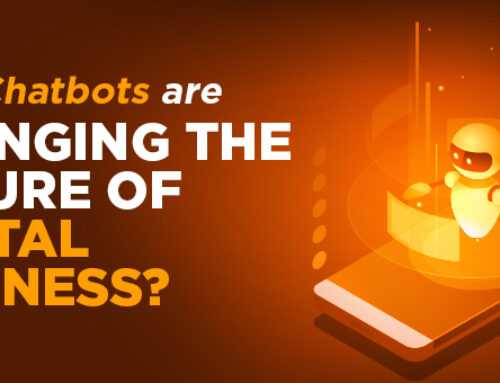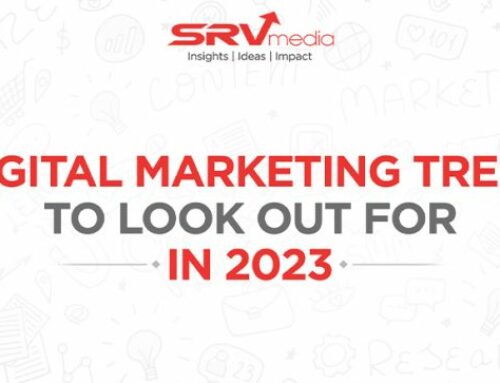Big Data and Digital Marketing: How Are They Connected

Gone are the days when marketers relied on gut feeling to make business decisions. Today, it’s all about data or, to be more precise, big data. With the help of big data, marketing specialists can accomplish a few goals: extract useful insights about business performance, predict users’ behavior, and make accurate strategies.
But what is actually big data? How does it relate to digital marketing? And why is it important for businesses to understand big data? Let’s dive in for the details.
What Is Big Data?
Big data, as the name suggests, is a collection of data in large volumes. It includes information about all marketing activities of a business and is collected in volumes that cannot be managed using regular data processing tools.
Big data also refers to a set of analytics data about user actions and behavior, providing insights into the reasons behind people’s decisions. All of this data helps companies and businesses predict the demand for a product and take the right actions to improve results.
Four V’s
Big data (BD) is generally broken down into four dimensions or 4Vs, namely:
- Volume (quality);
- Velocity;
- Variety;
- Veracity.
To better understand what BD means for digital marketing and how to work with it, let’s take a closer look at each of these dimensions.
-
Volume
Big data is all about volume. According to research, more than 2.3 trillion gigabytes of data are generated every day, and this number is only expected to grow due to the popularity of mobile networks.
Many companies have terabytes of information stored on their servers. Walmart alone handles over 1 million transactions every hour, which means its database stores over 2.5 petabytes. Then, of course, there are photo- and video-sharing mobile applications, wearable gadgets, and smart devices that people use every day, contributing to the growth of media content.
All this information that flows into organizations in large amounts is considered BD and needs to be analyzed to make the best business decisions.
-
Velocity
Not only the volume of data is growing but also the speed at which it is produced. Today, data is generated at a phenomenal rate, and in order for it to be useful for companies, it must be handled quickly.
The speed at which the generated data is processed, as well as the time it takes to retrieve the information, is referred to as velocity.
-
Variety
Variety is what makes data really big. It’s because of its variety that its volume is growing at an ever-increasing rate.
Manufacturing, retail, banking, education, government – all of these industries generate massive amounts of info daily, not to mention the healthcare sector that stores gigabytes of clinical information, YouTube with over 800 million videos, TikTok, Facebook, and other social media platforms.
And as we move forward and more people gain access to the Internet, the variety of information continues to expand.
Generally, there are two things to know when it comes to data variety. Namely, these are:
- The type of data formed;
- The source from which it is extracted.
In regard to the former, the types of data can be structured, unstructured, and semi-structured. When it comes to the latter, new sources appear every day, including but not limited to websites, apps, emails, smartphones, and so on.
Analyzing incoming data types and sources, where this data comes from, can help businesses and organizations better understand where to allocate their marketing budgets.
-
Veracity
The fourth letter V stands for veracity, i.e. the trustworthiness of the information. There’s a huge flow of information, but it is only through veracity that marketers can understand whether the information is accurate and worth keeping in the stream.
How Big Data and Digital Marketing Are Connected
Understanding big data (BD) is of the utmost importance. With the insights that it provides, marketers can shape accurate strategies and make informed business decisions.
The use of big data also helps increase sales and drive leads to the website. In addition, BD allows marketers to select effective campaigns to reach wider audiences and convert them into loyal customers.
More importantly, it allows companies to scale up. Using big data, companies can pinpoint exactly what people are searching for and where they are searching and optimize their promotional efforts to boost revenue.
The Role of Big Data
As the saying goes, “data is king” and there’s hardly a better way to describe the importance of big data in marketing. Many things change – images, videos, marketing strategies, etc., but information remains constant, making it a valuable asset for marketers.
By performing data analysis, companies can gain insight into what strategies have been used and map out an effective marketing campaign while avoiding the mistakes that have been made in the past.
In addition, BD analytics allows marketers to find out which channels bring in the most traffic. Thus, instead of spending money on all channels, they can invest in those with the highest conversion rates.
It’d not be an exaggeration to say that big data is the “eyes and ears” of companies. With its help, businesses can identify how people feel about their product or service and predict their reactions, remarkably driving sales.
All this shows that BD plays an important role in digital marketing and therefore should be leveraged to improve marketing returns.
Sentiment Analysis
Building strong relationships with customers is the key to business success. Only when companies have loyal customers can they expect to see an increase in the purchase rate, and that’s where sentiment analysis comes into play.
Sentiment analysis is a data-driven tool used to analyze the information about what customers think about your product and/or service, what they like and dislike about it, and what their current demands are.
Conducting sentiment analysis allows marketers to better understand their audience as well as figure out the strengths and weaknesses of their products. In addition, it gives them an idea of what audience they should be targeting. As a result, they can engage with the right people on a more personalized level by optimizing their future marketing campaigns.
Sentiment analysis can also be used for the following purposes:
- Understanding the underlying intentions of users;
- Improving a product/service quality;
- Improving customer service;
- Identifying new opportunities for growing business.
Audience Targeting
The whole idea of digital marketing is to gain more traffic and increase customers. For this purpose, big data works the best. With its help, marketers can target the right audience – and do so at the right time – through personalized campaigns.
The advantages of personalized campaigns are obvious. Compared to targeting irrelevant audiences, offers sent to the people most likely to show interest in a product can help increase sales and create a positive branding experience.
For this purpose, experts use many solutions that involve handling big data collection and analysis, as well as various proxy services such as Infatica.io and others.
Increased Sales
In addition to choosing the right audience to engage with, BD can provide companies with insight into how often customers make a purchase, at what time, and what payment methods they use. Collectively, this helps marketers build customer-focused marketing strategies and achieve increased sales.
Price Optimization
By analyzing competitor prices, current demand, seasonality, and other variables, big data allows marketing specialists to determine the best price for their products. As a result, they can set beneficial offers for their customers and maximize sales.
Accurate Measurement of Results
Perhaps, the biggest advantage of using BD is that it allows companies to accurately measure the results of marketing campaigns. With it, marketers can get an idea of what happens at each stage of their sales funnel and fix these gaps by taking the right actions.
Conclusion
Reiterating everything said above, big data is the driving force behind digital marketing. Thanks to it, companies can get much more insightful information about the performance of their business and customer demands and optimize their marketing efforts in the best way possible.
More importantly, because big data allows companies to predict trends based on their exact customer base, they can improve their performance and increase revenue while cutting down on operational costs.












